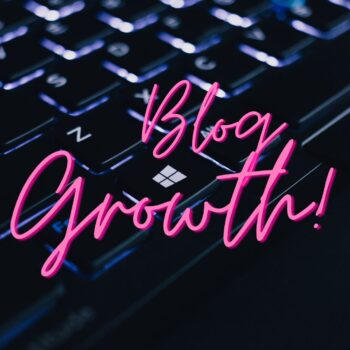Social media can feel like a confusing maze, especially if you’re new to using it for your blog. Should you be on every platform? What kind of stuff should you post? How do you actually get people to engage…and does it even matter if your post only gets a few likes? If these questions sound familiar, you’re not alone! The good news is, you don’t need to be a social media guru to see results. In this guide, we’ll break it down step-by-step, focusing on simple strategies that get your fantastic blog content in front of the right people. Think of it as your roadmap to navigating the world of social media, without the overwhelm.
1. Choose Your Platforms Wisely
Focus, Not Frenzy
The biggest mistake many bloggers make is trying to be everywhere on social media. This leads to burnout and mediocre results. It’s far better to get really good at 1-2 platforms than to spread yourself too thin.
Where’s Your Audience?
Think about your ideal blog reader:
- Age Range: Different demographics favor different platforms (Gen Z loves TikTok, Millennials are on Facebook, etc.)
- Interests: Are they visual learners (Pinterest, Instagram)? Do they seek professional connections (LinkedIn)?
- How They Consume Content: Quick bursts (Twitter) or longer reads (Facebook groups)?
Brief Platform Overview
Here’s a quick snapshot of a few popular platforms to get you thinking. Note: Demographics change, so do your own research!
- Facebook: Broad audience, good for longer posts, groups are powerful.
- Instagram: Visually driven, great if your niche is photo-friendly (food, DIY, etc.)
- Pinterest: Like a visual search engine, ideal for long-lasting content.
- Twitter: Fast-paced, conversational, good for news-focused niches.
- LinkedIn: Professional networking, works well for B2B blogs.
Match Content to Platform
What works on one platform might flop on another. Tailor accordingly!
- Image-First: Instagram, Pinterest demand eye-catching visuals.
- Don’t Forget Video: Short-form video (TikTok, Instagram Reels) is HUGE right now.
- Hashtags Matter: Help your content get discovered, but platform etiquette varies.
2. Optimize Your Profiles
Think of your social media profile as the welcome mat to your blog. Here’s how to make a great first impression:
Clear Profile Pic & Bio
- Your Pic: If you’re the face of your blog, use a headshot. If not, a logo or on-brand image works.
- Your Bio: Concisely tells people:
- Who you are
- What your blog is about (focus on the benefit for THEM)
- Why they should follow you (what kind of content do you share?)
- Action-Focused: Is it obvious what you want people to do? (Visit your blog, join your email list, etc.)
Keywords Count
Include relevant keywords in your bio and even your profile name (if possible). Why?
- Platform Search: People might search “healthy recipes” on Instagram and your profile could pop up!
- Clarity at a Glance: Keywords help people quickly understand if you’re a good fit for them.
Link Love
- Make it Clickable: Don’t just list your website URL, use a clickable link.
- Link Strategy: Will you link to your homepage, a specific landing page, or use a tool like Linktree for multiple options?
- Change it Up: Highlighting a new blog post in your link occasionally drives traffic!
Example Time
Need inspiration? Search for bloggers in your niche on your chosen platform and analyze their profiles. What works well? What could be improved?
3. Content That Gets Shared
Beyond Just Blog Links
While promoting your new posts is important, that can’t be ALL you share. Spice things up with:
- Image Quotes: Turn a key takeaway from your post into a shareable graphic (Canva is great for this!)
- Behind the Scenes: Give glimpses into your blogging process, it humanizes you!
- Polls & Questions: Engage your audience, and learn more about them in the process.
- Curate Content: Share other people’s posts relevant to your niche (they might return the favor!)
Visuals Matter
Even if your blog isn’t super visual, your social media should be!
- Stock Photos: Free sites like Pexels and Unsplash have tons of options.
- Simple Graphics: Tools like Canva make design easy, even for non-designers.
- Repurpose Blog Content: Turn a stat from your post into a text-on-image graphic.
Tailored to the Platform
- Understand Etiquette: Overly promotional posts are a turn-off on some platforms.
- Character Limits: Know how much text you can use before it gets cut off.
- Trending Formats: Is there a popular meme or challenge in your niche you could adapt?
Key Point: Social media is about connecting! Content that sparks conversation or evokes emotion is far more likely to get shared.
Example: Let’s say your blog is about productivity. Here’s how you could diversify your content:
- Typical Blog Promo: “New post: 5 Time Management Tips for Busy Moms [link]”
- Beyond the Link:
- Image quote of one of the tips
- Poll: “Biggest time-waster? A) Inbox B) Social Media C) Kids D) All of the above!”
- Share a relevant article from another blogger, adding your own brief commentary.
4. Engage, Don’t Just Broadcast
True connection, not just follower count, is what leads to long-term social media success. Here’s how to be an active participant, not just someone shouting into the void:
Social Means Two-Way
- Respond to Comments: Even a simple “thanks!” shows you’re paying attention. Meaningful replies spark deeper conversations.
- Don’t Ignore DMs: While not every message needs a lengthy response, address questions and feedback promptly.
- Time Investment: Schedule 15-20 minutes each day for engagement, even if it’s just liking and commenting on other accounts in your niche.
Join the Conversation
- Hashtag Power: Follow relevant hashtags and contribute thoughtfully to existing discussions.
- Participate in Chats: Many platforms have live chats (Twitter chats, etc.), which are great for networking.
- Seek Out Communities: Facebook Groups or niche-specific forums can be goldmines for connecting with your ideal audience.
Be a Helpful Human
- Share the Love: Promote other bloggers in your niche, especially those who are just starting out
- Amplify, Don’t Compete: See social media as a collaborative space, it benefits everyone in the long run!
- Give Without Expectation: Offer genuine support and advice, even if there’s no immediate benefit to you.
Key Point: The fastest way to grow your audience is to be genuinely interested in the audience you already have!
5. Understanding Analytics (Without Obsessing)
Don’t let analytics scare you! Even basic data helps you make smarter decisions about your social media strategy.
What Matters Most
- Start with Your Goals: Want to drive blog traffic? Focus on clicks. Brand awareness? Impressions matter.
- Platform Matters: “Likes” are nice, but on Pinterest, saves are where it’s at. Understand platform-specific metrics.
- It’s Not ALL About the Numbers: Qualitative matters too! Are you getting comments that show people genuinely connect with your content?
Free Tools to Start
- Built-In Analytics: Most platforms offer at least basic insights into post performance and audience demographics.
- Upgrade As Needed: As you grow, paid tools offer more data, BUT don’t feel pressured to invest right away.
Data Informs Strategy
Check your analytics regularly (weekly or monthly). Ask yourself:
- Top Performers: Which posts did best over a specific time period? What do they have in common?
- Engagement Times: Do you get more interaction at certain times of the day/days of the week? Adjust posting accordingly.
- Audience Insights: Is there anything surprising about who follows you (location, other interests)? This informs content creation.
Key Point: Don’t just track numbers for the sake of it. Use the data to make informed decisions about the kind of content you create and how you share it!
Conclusion: Your Social Media Success Journey
Let’s recap the keys to mastering social media for your blog:
- Strategic Choices: Focus on the 1-2 platforms where YOUR ideal audience hangs out.
- Optimized Profiles: Make it clear who you are, what you offer, and why people should follow.
- Shareable Content: Diversify what you post to keep people engaged.
- Be an Active Participant: Engage with your followers, join the wider conversations in your niche.
- Analyze & Adapt: Use data to understand what works and refine your strategy over time.
It’s a Marathon, Not a Sprint
Building a loyal social media following takes time and consistent effort. Don’t get discouraged by slow starts! And remember, platforms like Pinterest can be a great way to get your content seen more quickly, especially when you’re new and still building your SEO authority.
Call to Action
Ready to level up your social media game? Here’s your challenge:
- Analyze Your Current Approach: What’s working well? Where’s the biggest opportunity for improvement?
- Pick ONE Thing: Based on what you learned in this guide, choose one area to focus on (ex: updating your profiles, creating more shareable images, etc.).
- Take Action & Track Results: Commit to implementing that change for at least a few weeks. Did it make a positive difference?
Let me know how your social media experiment goes!









No Comments
Leave a comment Cancel